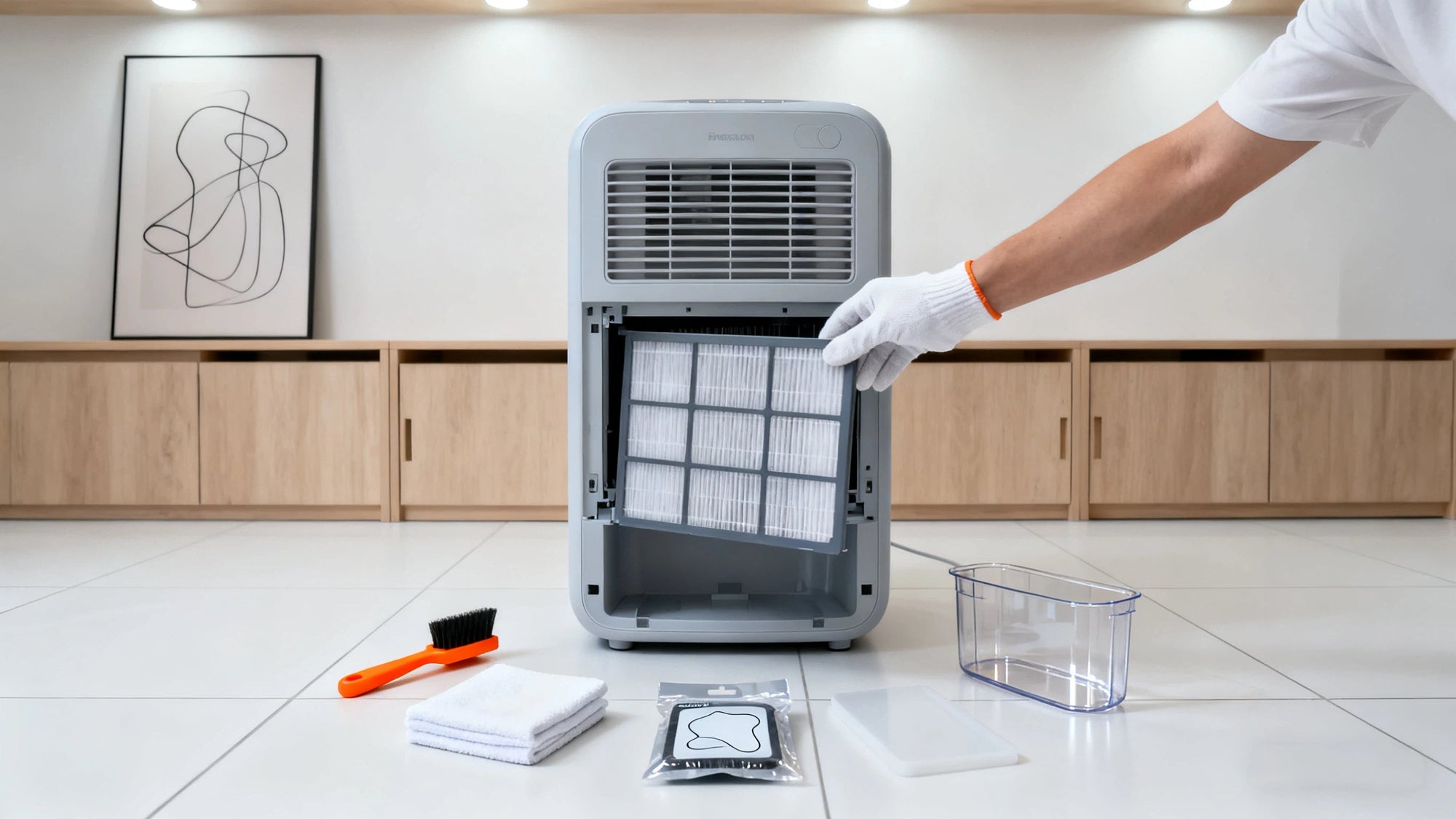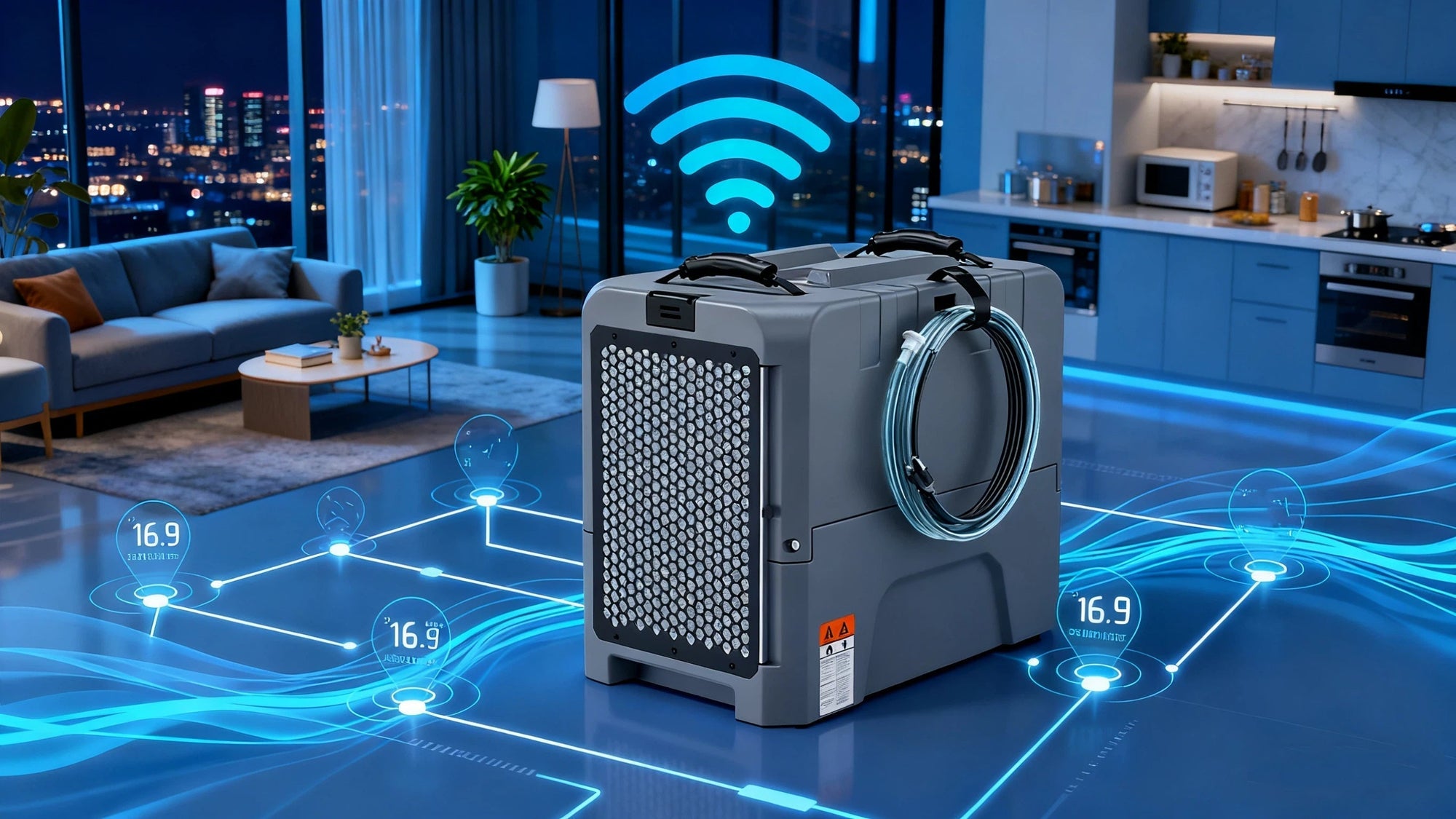High humidity levels within your home or company can lead to discomfort, health problems, but also the wellbeing of your property. That’s why it’s inherently important to take your time and identify the most effective methods of dehumidifying the house/property. With that in mind, you can go with a whole-house dehumidifier or with zoned dehumidification. But which one is the better option? Let’s find out!
Defining whole-house vs. zoned dehumidification systems
While both of them can be a good solution for commercial and home humidity control, there are certain differences that you need to take into consideration. A whole-house dehumidifier will connect to the HVAC system and it offers centralized control for your home’s humidity. The way it works is it gets moist air via the return ducts, it removes the humidity and thus you have dry air coming towards you. Since this is meant for the entire house, it’s a great option, especially if there are many people living within the same space.
Then, we have the zoned dehumidification systems. In this case, you have smaller dehumidifiers that will target a specific area. Usually, these are specialized into attic, garage, basement dehumidifiers and so on. You can set independent controls and it’s just a more ideal solution if you want specific dehumidification solutions depending on the situation at hand.
Pros & cons
Pros for whole-house units
- A whole-house unit will be great if you want comprehensive coverage. You get to keep a balanced humidity level for the entire property.
- These models tend to have a very quiet operation, with noise levels being very low.
- Once these units are installed, you can forget about them, they will run automatically as they were set up.
- Since these share the ductwork with your existing HVAC system, they require less energy.
Cons for whole-house units
- The initial investment is much higher when compared to purchasing just a couple of portable units.
- You will need to hire a professional to integrate this system into your current HVAC system.
- Zoning control is limited, which can prove to be a disadvantage at times.

Pros for zoned units
- Thanks to the zoned installation, you get targeted humidity control
- The upfront cost is lower, you can see that from the dehumidifier comparison
- It’s the type of dehumidifier that can be very easy to maintain
- Additionally, the installation process is very flexible, a lot of the time it’s just a plug and play approach.
Cons for zoned units
- Each room has its requirements, so due to the system’s unique approach, you will have a sense of inconsistent comfort.
- The long-term energy use is higher, mainly because you have to run multiple smaller units, which can prove to be less effective and dependable.
- And yes, you will have to monitor multiple units, with each zone requiring your attention.
Both the zoned and whole-house units can be good in their own right. And while you can do a dehumidifier comparison, the reality is that you have to think about costs, effectiveness and long-term results. That will make it easier to choose the right unit to fit your needs.
Best use cases for each
It’s important to note that each one of these dehumidifiers has their own use case. You should ho for zoned home humidity control if you want a dehumidifier for your basement, crawl space, garage and laundry room or attic. These models are great for spots where the moisture is concentrated in just a few areas.
On the other house, we have the whole-house models that are great for large homes with consistent humidity over multiple floors. They can also be suitable for the open concept living spaces, all-season control and health-sensitive environments.
How to choose the right capacity?
Generally, if you want any device for home humidity control, there are a few important things to consider when it comes to its capacity:
- Consider the moisture level, when the region is humid or you had a lot of water leaks recently, it makes sense to go for a high-capacity unit.
- Room size also matters, if you have a small room up to 1000 square feet, then a device that covers 30-50 pints daily will be fine. For medium areas up to 2500 square feet, then you can go up to models that cover 90 pints per day at most. For a large home, 90+ pint models are preferred.
- Regardless of what option you want to use, you should have a drain line that helps remove the water automatically. That’s ideal especially for crawl spaces and basements.
- Don’t forget about energy efficiency. It makes sense to check for the Energy Star Certification. That shows the model is very efficient and thus it will help you save money on energy costs, too.
Setup and maintenance tips
As expected, each model type has their own considerations and requirements when it comes to maintenance.
Whole house units:
- You will need to hire a professional HVAC technician to install the unit
- It’s necessary to change the filters every 3-6 months
- Additionally, you want to inspect the condensate line and ensure that there are no water drainage problems
- An annual tune-up is recommended, as you do need to schedule a yearly service visit to keep efficiency
- The humidistat needs to be calibrated, as you want to keep humidity levels up to 50% at most.
Zoned dehumidification units:
- It’s a good idea to check the unit every week, and you want to empty the collection buckets
- You want to position every zoned unit strategically, so you can get the best airflow
- Smart controls are necessary, and you can rely on things such as remote monitoring
- Cleaning the sensors and coils is a great idea, because it will remove dust, while also boosting the efficiency of the unit.

Abestorm’s recommended solutions
Whether you want to get a whole-house dehumidifier or a zoned dehumidification unit, Abestorm is here to assist. We provide you with some of the top home humidity control solutions on the market. You can check our different models for a dehumidifier comparison, but here are some of the recommended options:
- If you want a whole-house unit, we recommend models like the Guardian SN90 or the Hurricane LGR85.
- For any zoned dehumidifiers, we recommend products like the Guardian SN35P or the Guardian SN55S.
It’s always extremely important to work with vetted professionals that you can trust and rely on. Abestorm has decades of experience in the dehumidifier industry, and we are here to provide outstanding products with great value for money. Don’t hesitate and contact us today for any of these dehumidifiers, we guarantee you will have a great experience every time!







Shop For Dehumidifier
Abestorm 170 PPD 2,100 Sq.Ft Commercial Dehumidifier with Pump and Drain Hose | Hurricane 800
Abestorm 180 PPD 2,300 Sq.Ft Commercial Dehumidifier with Pump and Drain Hose | Hurricane LGR85
Abestorm 180 PPD 2,300 Sq.Ft Smart WIFI Commercial Dehumidifier with Pump and Drain Hose | Hurricane LGR85-Grey (wifi app not available now)
Abestorm 264 PPD 3,000 Sq.Ft Commercial Dehumidifier with Pump and Drain Hose | Hurricane 125P